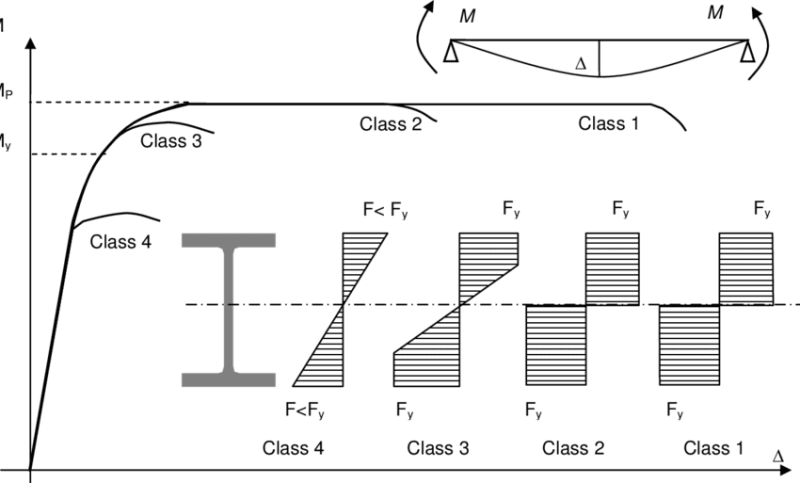Logan82
Structural
- May 5, 2021
- 212
Hi!
The equation of the moment resistance of class 3 beams is Mr = ϕ * S * Fy.
Why is it considered that the class 3 section plastifies even though the equation uses the elastic modulus S?
For class 1 and 2 sections, the equation is Mr = ϕ * Z * Fy, with Z being the plastic modulus, so it is easy to see that the section plastifies.

Source:
The equation of the moment resistance of class 3 beams is Mr = ϕ * S * Fy.
Why is it considered that the class 3 section plastifies even though the equation uses the elastic modulus S?
For class 1 and 2 sections, the equation is Mr = ϕ * Z * Fy, with Z being the plastic modulus, so it is easy to see that the section plastifies.

Source:

